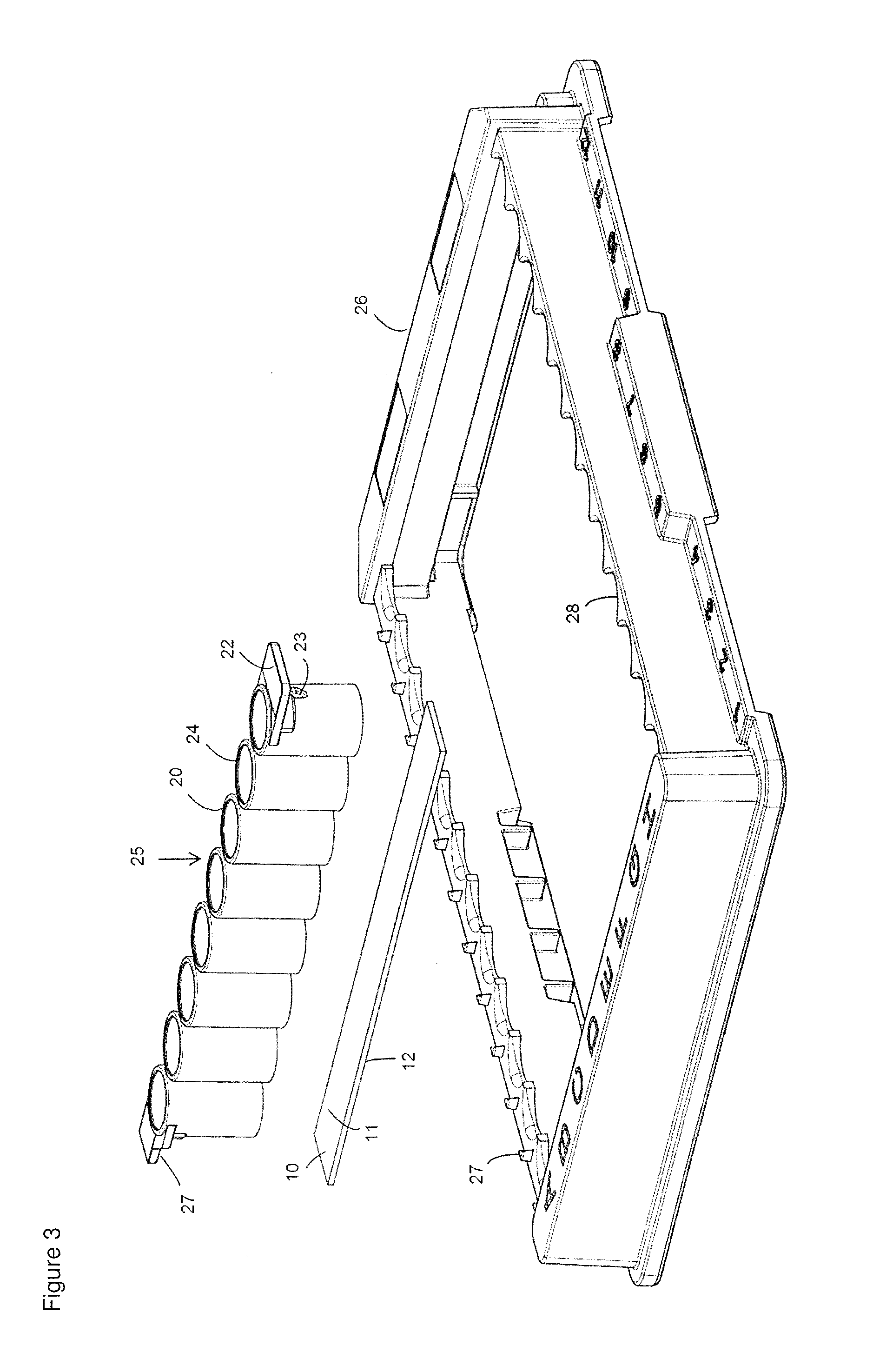Spotting plate and process for its production
a technology applied in the field of spotting plates and process for its production, can solve the problems of increasing the risk of damage to the pipetting head, difficult structure, and time-consuming process, and achieves easy and more specific binding, high binding capacity, and increased binding capacity of the polymeric substrate.
- Summary
- Abstract
- Description
- Claims
- Application Information
AI Technical Summary
Benefits of technology
Problems solved by technology
Method used
Image
Examples
example preparation
of a Microtiter Plate in a Batch Process
[0085]For the preparation of a reaction chamber assembly in form of a microtiter plate 40 a polymeric flat substrate plate 10 having a reaction surface 11 and a bottom surface 12 is used. The substrate 10 has a size according to SBS standard ANSI / SBS 4-2004 appropriate to accommodate a superstructure 40, here a microtiter plate with bottomless reaction chambers 20.
[0086]The flat substrates are first analysed for the homogenity of their surfaces with a fluorescence scanner at 532 nm. The averaged background fluorescence at 96 positions is measured and averaged. In a second quality control the contact angle with water is measured at 10 positions.
[0087]Afterwards, the biological agent to be loaded or spotted onto the substrate plates 10 are prepared in their respective buffer solutions and positioned in the “source tube” or “source plate” location of a printing system or spotter, for example a sciFLEXARRAYER. The printing system or spotter or sci...
PUM
| Property | Measurement | Unit |
|---|---|---|
| thickness | aaaaa | aaaaa |
| speed | aaaaa | aaaaa |
| diameter | aaaaa | aaaaa |
Abstract
Description
Claims
Application Information
 Login to View More
Login to View More - R&D
- Intellectual Property
- Life Sciences
- Materials
- Tech Scout
- Unparalleled Data Quality
- Higher Quality Content
- 60% Fewer Hallucinations
Browse by: Latest US Patents, China's latest patents, Technical Efficacy Thesaurus, Application Domain, Technology Topic, Popular Technical Reports.
© 2025 PatSnap. All rights reserved.Legal|Privacy policy|Modern Slavery Act Transparency Statement|Sitemap|About US| Contact US: help@patsnap.com



